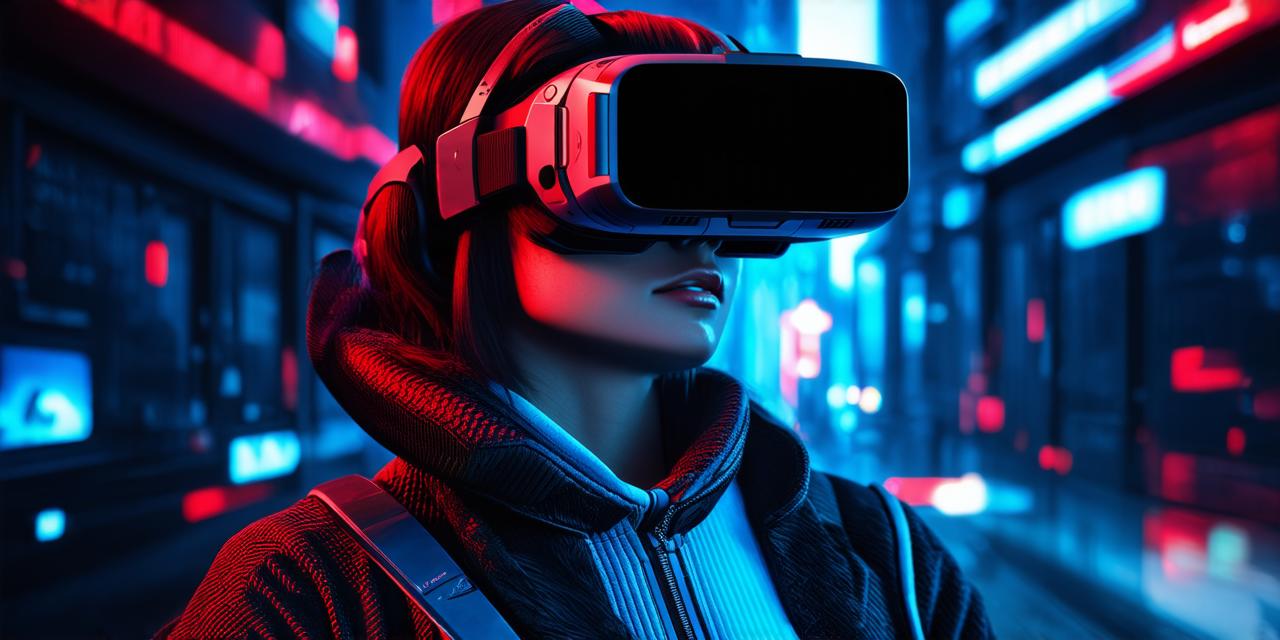Virtual Reality Gaming: An Overview
Virtual reality (VR) is a computer-generated simulation that allows users to experience a different environment or reality through special headsets and sensors. These devices track the user’s movements and adjust the virtual world accordingly, creating an immersive experience that can feel almost like being in a real-life situation.
The first VR headset was introduced in 1968, but it wasn’t until the early 2000s that VR technology became more accessible and affordable. Today, there are many different types of VR headsets available, ranging from entry-level devices like the Oculus Quest 2 to high-end systems like the HTC Vive Pro Eye.
Virtual reality gaming has already found its way into various industries, including entertainment, healthcare, education, and training. In entertainment, VR games allow players to experience a fully immersive game world that responds to their actions in real-time. In healthcare, VR technology is being used to simulate surgical procedures and other medical treatments, providing doctors with a safe environment to practice and improve their skills.
In education, VR simulations can be used to teach students about historical events or scientific concepts in a more engaging and interactive way.
The Future of Virtual Reality Gaming
As technology continues to advance, we are getting closer and closer to experiencing virtual reality gaming in a more immersive and realistic way. One major development is the introduction of haptic technology, which allows users to feel physical sensations within the virtual world. This can include feeling the weight of objects or the texture of surfaces, creating a more lifelike experience.
Another area where we are seeing rapid progress is in the development of wireless VR headsets. These devices eliminate the need for cables and other connecting equipment, making it easier to move around and interact with the virtual world. Wireless VR technology is also expected to become more affordable and accessible in the coming years, which will make it possible for even more people to experience the benefits of virtual reality gaming.
One of the biggest challenges facing virtual reality gaming is the high cost of equipment. VR headsets and other devices can be quite expensive, which can limit their accessibility to many people. However, as technology continues to advance and become more affordable, we are likely to see this barrier decrease over time.
Benefits of Virtual Reality Gaming
There are many potential benefits to using virtual reality gaming for entertainment, education, and other purposes. One major benefit is the ability to create highly immersive experiences that can be difficult or impossible to achieve in real life. For example, a VR game could allow players to explore a distant planet or travel through time to experience historical events firsthand.
Virtual reality technology can also be used to improve learning outcomes by making education more engaging and interactive. By providing students with a safe environment to practice and improve their skills, virtual reality simulations can help them develop better problem-solving abilities and enhance their overall understanding of complex concepts.
Another potential benefit of virtual reality gaming is its ability to provide therapy and rehabilitation for people with disabilities or medical conditions. For example, VR technology can be used to simulate physical therapy exercises, allowing patients to practice their movements in a safe and controlled environment.
Challenges of Virtual Reality Gaming
While virtual reality gaming has the potential to bring many benefits, there are also some challenges that need to be overcome. One major challenge is the high cost of equipment, which can limit its accessibility to many people. As we mentioned earlier, as technology continues to advance and become more affordable, this barrier is likely to decrease over time.
Another challenge facing virtual reality gaming is the potential for motion sickness and other adverse effects. Some people may experience nausea or dizziness when using VR devices, which can make it difficult to enjoy the experience. However, there are many ways to mitigate these effects, including adjusting the settings on the VR headset or taking breaks from the virtual world.
Finally, there is a risk that virtual reality gaming could become addictive, leading people to spend excessive amounts of time in the virtual world and neglect their real-life responsibilities. While this is certainly a concern, it is important to remember that VR technology can also be used for therapeutic and educational purposes, and can help people improve their lives in many ways.
Summary
Virtual reality gaming is an exciting technology that has the potential to bring many benefits to entertainment, education, healthcare, and other industries. While we are still getting closer to experiencing virtual reality gaming in a more immersive and realistic way, there are also some challenges that need to be overcome. As technology continues to advance and become more affordable, we can expect to see virtual reality gaming become even more accessible and popular in the coming years.
